The Metaverse Overview: From the Past to the Future(Part 2)

Produced by: LD Capital Research
Author: James Kuo, VP of LD Capital
Research Associates: Noise Zhou, YY, Betty, Lightmanben
Translation: YY, Lightmanben
2.3 Blockchain Industry
2.3.1 Internet Economic System VS Blockchain Economic System
In the case of Roblox, one of the most important reasons why it has become “the first Metaverse stock” is that it provided the original “Play to Earn” economic incentive model, which allows the game to add profit expectations on top of simple entertainment and social attributes. The economic system is shown in the following figure. However, this economic system still has much room for improvement. For example, it is difficult for players to auction and realize their outstanding virtual assets directly, and the right to interpret the virtual assets they create (including the right to interpret ownership and revenue) does not belong to the player, but belongs to the platform organization. In addition, the user’s personal identification information and other private data are also controlled by the platform organization. This monopoly control of virtual assets is a huge obstacle to the development and prosperity of the Metaverse, making it impossible to maximize the creative desire of players. The solution to all this lies in the blockchain economic system.
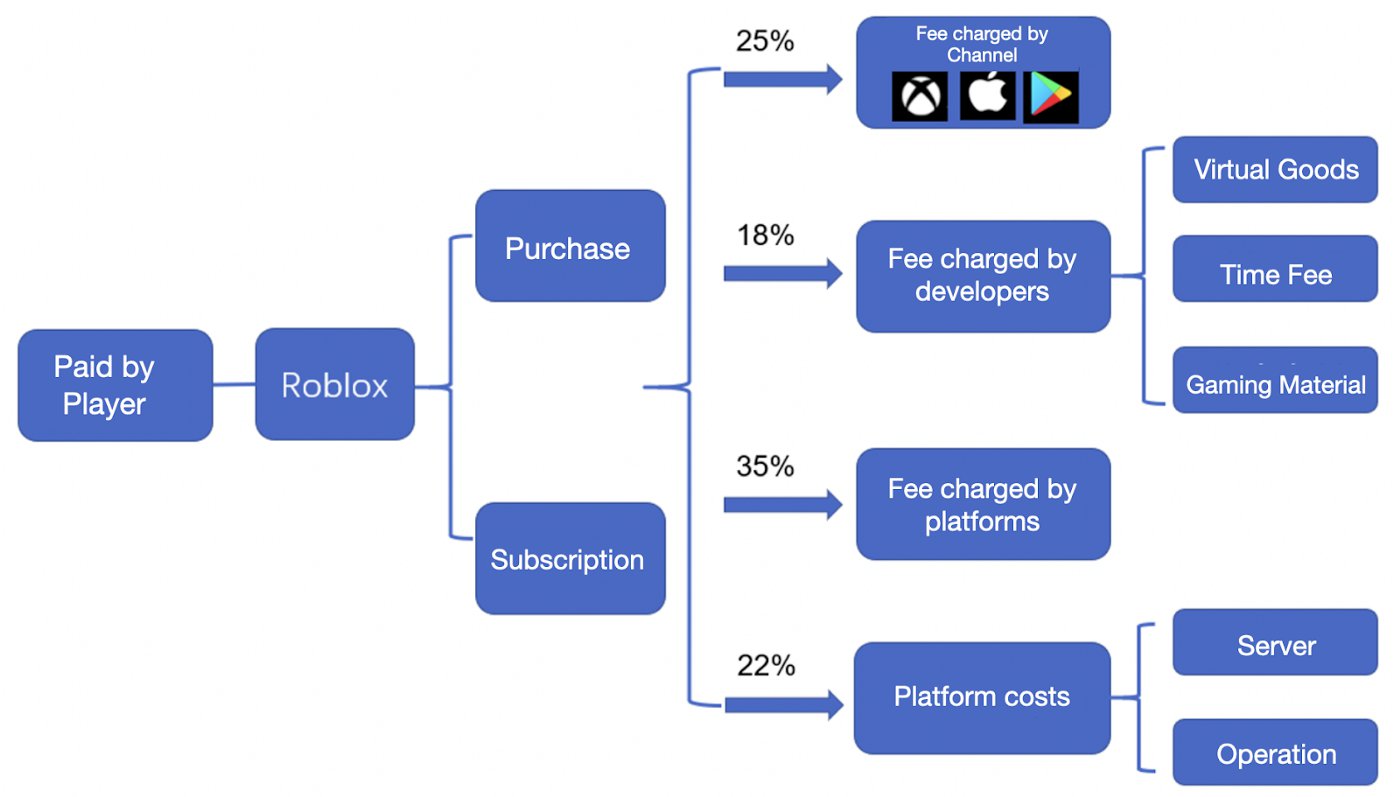
The innovation of the blockchain economic system lies in:
- Efficient protection of rights and interests
It truly endows creators with many rights monopolized by platforms and institutions (such as the ownership, right of use and disposal in terms of virtual assets, etc.), and at the same time ensures the absolute fairness and transparency of rights and interests through distributed ledger technology. This technology (such as NFT) enables users to obtain rights and interests protection similar to the real physical world in the virtual space of the Metaverse, and the assets owned by users can be freely circulated, traded and disposed of without being restricted by third parties. In addition, programmatic agreements based on smart contracts can not only provide users with fair and transparent rights and interests protection, but also realize the automation of rights and interests distribution and no trust guarantee, thereby greatly reducing the costs of identification and settlement in various economic activities;
- Extensive financial services
The open financial ecosystem based on blockchain (such as DeFi) can provide a series of efficient, fair and transparent financial services for virtual assets in the Metaverse, including asset issuance, asset auction, asset lending, and insurance. This extensive financial service system is able to consolidate the material attributes of virtual assets, reduce the cost of content creation, and thereby encourage the enthusiasm of all parties involved in the Metaverse;
- Unlimited cross-platform liquidity
In the Internet, virtual assets are actually controlled by independent platforms. Therefore, if you want to realize cross-platform virtual asset liquidity, you must first realize the trusted data sharing between platforms, with complex processes, long transfer time, and high liquidity costs. However, virtual assets on the blockchain (including data, artworks, and digital identities, etc.) can realize cross-platform liquidity and point-to-point transactions based on the same underlying public chain. With the maturity of blockchain cross-chain technology and Layer 2 technology, low-cost liquidity of any blockchain asset will be realized.
2.3.2 Industrial Ecosystem of Blockchain
Blockchain technology originates from bitcoin technology and flourishes in the smart contract platform Ethereum, and has now formed a comprehensive ecosystem including computing, privacy protection, distributed storage, finance, games, etc. Among them, open finance represented by DeFi and gaming represented by GameFi are the most mature and imaginative sectors currently developed — they are indispensable and important parts of the coming Metaverse future.
- DeFi and NFT
Mature financial services contribute to the prosperity of any industry. If the Metaverse develops further to “beyond the real universe”, then DeFi applications and NFT middleware are its best partners.
DeFi supports open finance that fits the sharing characteristics of the Metaverse. It provides financial services, including transactions, lending, and insurance to help reduce the creation cost and the realization cost of artworks for metaverse players.
Up to now, according to the statistics of DeFi Pulse, a blockchain data tracking website, DeFi has accumulated a huge amount of on-chain liquidity throughout the blockchain industry, and its overall TVL is as high as $8.11 billion, while DeFi’s business scope and products are also becoming increasingly far-reaching and mature, including decentralized exchanges, lending, payments, derivatives, asset management and insurance, etc. Leading projects include Aave, Compound, Uniswap and Maker. Uniswap has become the first DeFi protocol in history with total revenue exceeding $1 billion.
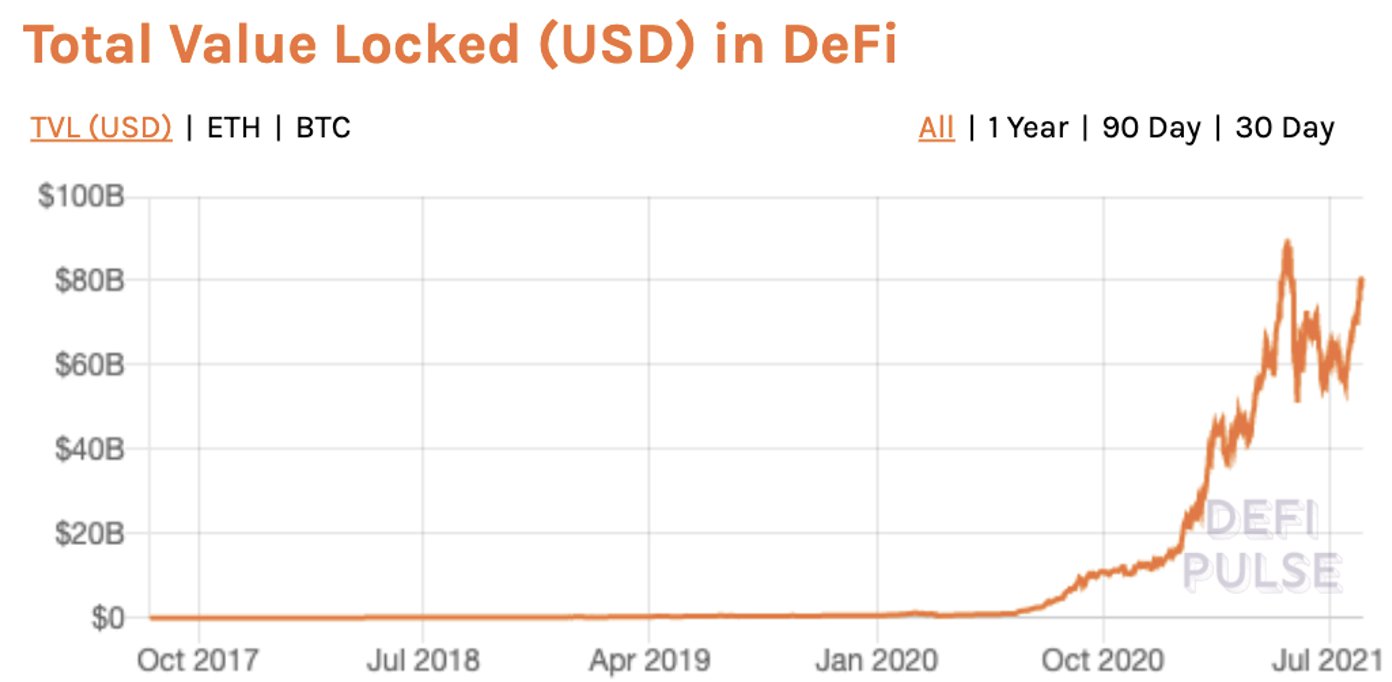
As a “non-fungible token”, NFT is a middleware located between the application layer and the public blockchain. It mainly provides various virtual assets (including data and works, etc.) with rights-and-interests records and the ownership related to asset identification, so that users can fairly, transparently and safely issue, store, lend and transfer virtual assets. At present, NFT has been widely used in the identification and trading of virtual assets and virtual rights in a variety of fields. According to statistics from NonFungible.com, the highest weekly sales of NFT across the network exceeded $375 million.

Take Cryptopunks, the #1 ranked native cyberpunk art project, as an example. Since 2017, its total transaction volume has reached around $650 million. Among them, CryptoPunk #7804 and CryptoPunk #3100 were sold for 4200 ETH in March 2021 (worth about $7.5 million). On May 13, 2021, “21st Century Art Auction” held at Christie’s New York, a group of nine PUNK avatars were sold for $14.5 million. On June 10, 2021, CryptoPunk #7523 was sold for $11.754 million. The money flow attracted by NFT in the art industry is remarkable. For a moment, the NFT craze swept across entertainment, games, sports, social, luxury and other fields, with big players such as Coca-Cola, Louis Vuitton, sports star Bailey, and fashion magazine Vogue.

- GameFi
The presentation of the Metaverse is gamification. Blockchain + gaming are the earliest explorations of the embryonic form of the Metaverse. There are various types of blockchain games, including on-chain pet games, fan economy games, sandbox games, card games, exploration adventure games, etc. Only some of the classic games are selected here for a brief introduction.
Pet Games
The earliest popular products in this kind of blockchain game can be traced back to the pet game launched by the Dapper Labs team in 2017: CryptoKitties, a crypto cat game. It was officially launched on November 28, 2017, and by December 5, the game had accounted for about 25% of the total transaction volume on Ethereum, which once caused severe congestion on the Ethereum network.
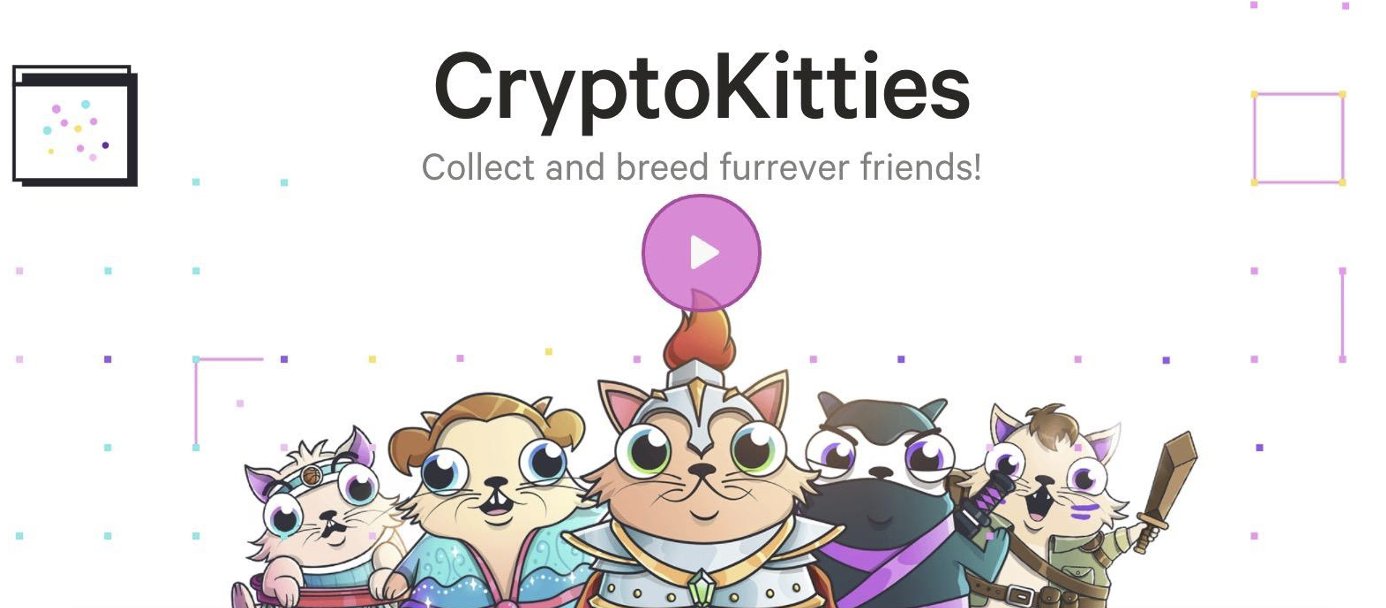
Axie Infinity, another pet game also created in 2017, has made more significant improvements in playability, user experience and economic model after the continuous iteration from 2018 to 2020. The game uses AXS and SLP dual token economic models to split gas costs and equity benefits, and combines deflationary “burning” mechanism, scholarship system, yield lending and other modes, which greatly improves the capital turnover rate of the whole game.
In April 2021, the revenue of the game protocol was only $670 thousand. After moving to the Ronin sidechain in May, the revenue began to blow out, from $3 million in May to $12.2 million in June, and the revenue of Axie reached $166.2 million in July. In three months, the game protocol revenue had increased 248 times, reaching nearly 300 thousand users of wallet interactions in 30 days, which is well-matched to Roblox’s “Play to Earn” model.
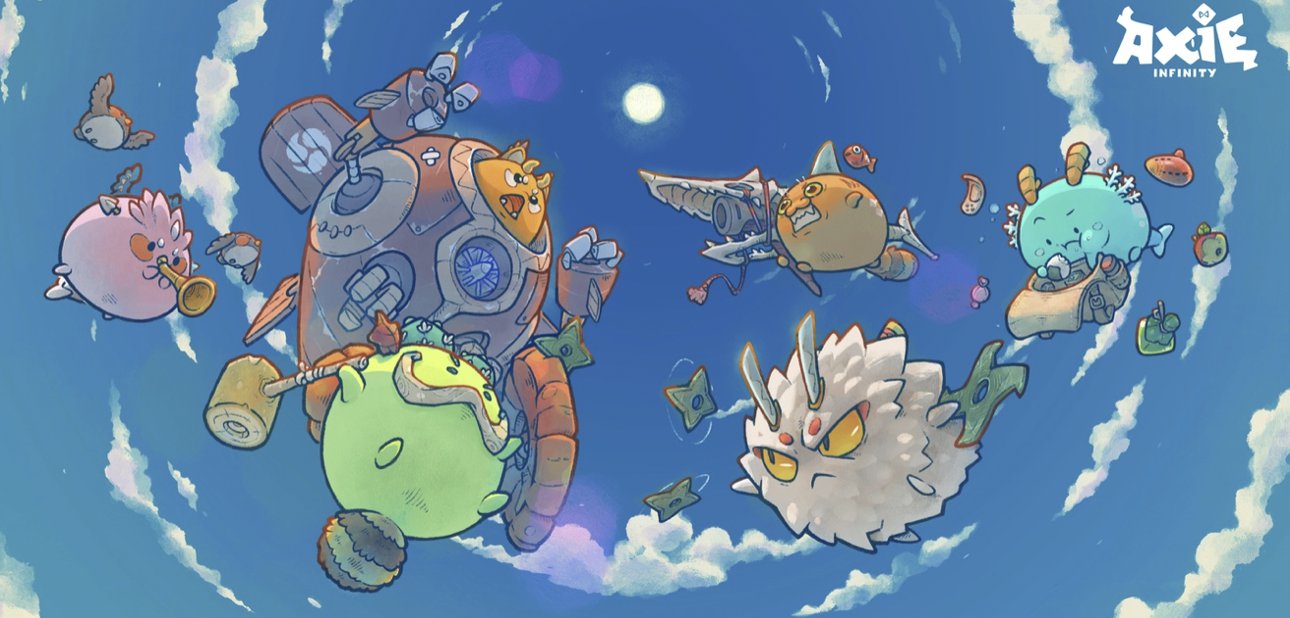
Fan Economy Games
In 2017, after the popularity of the crypto cat game exposed the poor scalability of the Ethereum network, its publisher Dapper Labs subsequently launched Flow, a public chain platform explicitly developed for blockchain games, and co-launched a fan economy game with the NBA and NBPA after Flow’s mainnet launched in 2020: NBA Top Shot. The game focuses on the peripheral collection of sports stars, and the core gameplay is through official card packages, and allows players to buy, sell and collect NBA official authorized collectibles on the trading market (currently there are player moments Moments).
Top Shot launched its public beta in October 2020, initially with only a few hundred users, reaching nearly 20,000 active users in January 2021, while surpassing CryptoKitties in total turnover to reach $29.48 million on January 26, and completed $45.768 million sales on February 22, 2021. As of today, its total transaction volume has reached $670 million.

Sandbox games
Sandbox games like Minecraft can significantly stimulate the creativity of players, while blockchain sandbox games are mainly represented by Decentraland, Cryptovoxels, and The Sandbox — they feature creative space construction, commercial activities, artistic creation, and social activities around virtual land. Take The Sandbox as an example, its core philosophy is: play, create, own, manage, and make money, and it provides three core kits: VoxEdit, which is used to construct game assets, that is, software for in-game modeling; Marketplace, a decentralized market for trading game assets; Game Maker, a visual programming tool for users to build 3D games for free. Players can participate in the creation, experience, and purchase of buildings or games through their native tokens, and eventually form their self-consistent circular economy system.

2.4 Capital layout of the metaverse industry
With the maturity of VR/AR hardware, content, blockchain and other related industries, “Metaverse” has quickly become popular in the capital world because of its gradually unfolding broad prospects, and has suddenly attracted the attention of a large number of investors and entrepreneurs.

Chinese Investors
Since the market cap of “the first Metaverse stock” Roblox broke through 40 billion dollars on the first day of listing in March 2021, the gaming company MetaApp subsequently completed its $100 million Series C fundraising known as the “largest single fundraising in the Chinese metaverse sector”. In addition, Reworld, known as the “Chinese version of Roblox”, also quickly obtained a strategic investment of ByteDance with ¥100 million. Almost at the same time, the gaming company Epic Games also acquired a new round of fundraising with 1 billion dollars — the star enterprise, which has suffered losses in the past years, even received additional investment from Sony to keep up their metaverse layout.
Among Chinese investors, Tencent’s layout is more forward-looking, as early as the end of 2020, Ma Huateng shouted out the prophecy of “all-real Internet”. They had invested in Roblox before its listing and exclusively acted as an agent for its product distribution in China. In addition, Tencent also invested $330 million in the virtual game engine developer Epic Games for 40% share, and invested in virtual concert operator Wave, photo and video social application Snapchat’s parent company Snap, Emoticon tool Bitmoji and other companies building the metaverse ecosystem.
Global Investors
For global investors, companies such as Facebook, Apple, Disney, Amazon, and Google have long begun the layout of the metaverse industry. In May 2020, Apple acquired VR live start-up Next VR at a $100 million valuation, and in the following August, Apple acquired VR technology start-up Spaces, which develops VR offline experiences and VR virtual meeting platforms. So far, Apple has more than 330 VR/AR public-key patents, as well as 18 VR/AR-related mergers and acquisitions.
However, the company with the most aggressive layout in the metaverse industry is Facebook. Facebook acquired Oculus, a VR equipment manufacturer, at $2 billion as early as 2014 and increased its investment budget in the VR business from $5.9 billion/year to nearly $18.5 billion. Its founder Zuckerberg firmly believes that “the metaverse is the next Internet”. He has invested tens of thousands of talents in the VR/AR field, accounting for about 1/5 of the total number of employees, and has also set up a metaverse product team of hundreds of people.
Crypto Investors(Global)
Unlike traditional start-ups, blockchain-based start-up projects have lower costs in development, operation, and marketing, and through the deep implantation of the blockchain economic system, they can often encourage the active participation of users through economic incentives. Similarly, the crypto investors have greater flexibility in underlying investment diversity, investment frequency, and investment methods.
Take Andreessen Horowitz (a16z), a well-known venture fund, as an example. It was founded in 2009. It is an early investor in Roblox and actively invested in virtual reality games such as Singularity 6, Sleeper, Sandbox VR, Bonfire; Facebook’s virtual reality technology company Oculus and VR fitness application Supernatural. In addition, a16z also actively invested in the blockchain industry through its crypto fund. Their portfolio covers famous blockchain projects such as CryptoKitties, Flow Network, and Rally.
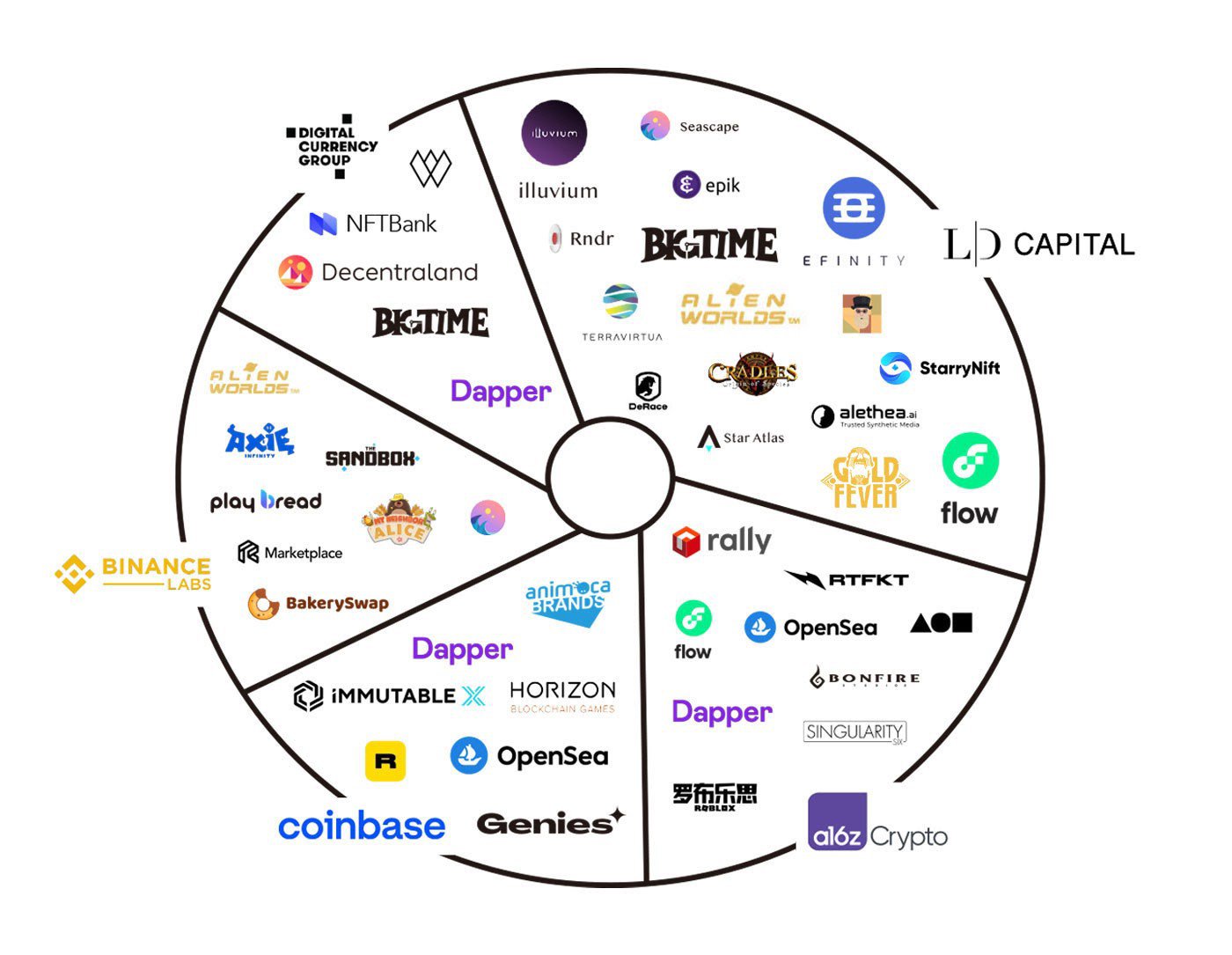
Another type of crypto investor belongs to native crypto funds, such as DCG, Coinbase, Binance Labs, and LD Capital. Their portfolios primarily focus on the blockchain industry (as shown in the above figure). Among them, DCG’s investment in Metaverse is relatively cautious, and its portfolio includes Decentraland, Dapper Labs, Bigtime, etc.; Coinbase and Binance Labs are investors under the banner of centralized exchanges, thus their portfolios are aligned to the exchange’s ecological layout, marketing strategy and operational guidelines; however, among all investors, LD Capital is one of the savvy investors in the metaverse market. Up to now, LD Capital has invested in over 20 NFT-related projects. Their portfolio extends from the infrastructure public chain, the intermediate protocol layer, ecological applications, to the metaverse ecosystem, which includes star projects such as Flow Network, Efinity, Illuvium, Bigtime, Terra Virtua, Alien Worlds, Star Atlas, RNDR and Seascape.
3 Metaverse: The Future of Cyberpunk Within Reach?
After walking through the entire development history of the Metaverse and the industrial status quo, we have drawn the following inferences:
- The Metaverse is rooted on the Internet and is destined to be a more magnificent world. However, it is too early to celebrate its success. The Metaverse may be one of the most charming fruits on the tree of the Internet. However, according to the article’s analysis of the development status of the entire industrial chain, although the fruit of the Metaverse is attractive, it is still a long way to go for building the final metaverse;
- Hard technology has become the bottleneck for Metaverse development, followed by the heterogeneous integration of blockchain and the Internet. So far, the development of the content industry and blockchain industry in the Metaverse has been surprisingly rapid, but the current development of the Metaverse still cannot bypass the bottleneck in the development of hard technology, including AI, VR/AR, high-speed networks, brain-computer interfaces, etc. In addition, blockchain and the Internet are heterogeneous systems — introducing the huge user base of the Internet to the self-motivated economic rules of the blockchain is another problem that needs to be solved urgently. Both of the above will lead to a significant decline in user experience, and it is difficult to form a virtuous circle of “network effect” and “flywheel effect”;
- The importance of blockchain to the Metaverse is still seriously underestimated. Due to the differences between countries around the world in terms of compliance, as an emerging industry, blockchain has to survive in the cracks of national supervision, which leads to a large number of development talents and capital unable to enter the blockchain industry in order to further explore its potential. The base determines the superstructure, and the development of the Metaverse is the same;
- Gamification, entertainment, and incentive will be the core aspects for guiding the development of Metaverse. However, this development trend does not always bring good results, it will also make deprivation easier and more hidden, and blockchain may be our only solution;
- Be vigilant to the NFT bubble and avoid stepping into the liquidity traps. Although NFT is popular all over the world, it is also easy to become a seller’s market, and the price is easily manipulated by less funds. Once the market consensus collapses, the price of NFT assets is prone to plummet until liquidity dries up;
- The development of GameFi is promising, but the exceptional turnover and profitability for specific projects may not be replicable.
Reference
- Neal Stephenson, Snow Crash, 1992
- “Metaverse”, Wikipedia
- “The Internet 1991–2021”, the Opte Project
- “Augmented, Mixed and Virtual Reality 2020–2030: Forecasts, Markets and Technologies”, IDTechEx Research
- “The metaverse: what every early-stage investor needs to know”, Frank Holmes, 2021
- “Dapp industry overview:July 2021”, DappRadar, 2021
- “Metaverse: The Next Version of the Internet”, Guosheng Securities, 2021
- “Roblox in-depth report: Metaverse first stock, metaverse leader”, Tianfeng Securities, 2021
- “Metaverse: Game is the Ark to Virtual Reality”, Tianfeng Securities, 2021
- “The NFTs ecosystem: 2021 boom & beyond”,Sasha Shilina & Paradigm, 2021
Disclaimer
The information in this research report comes from publicly disclosed information, and the opinions in this article are for research purposes only and do not represent any investment opinions. The opinions and predictions issued in the report are only analysis and judgment on the date of issuance and do not have permanent validity. In addition, under no circumstances will the organization and the author be liable to anyone for any losses caused by the use of any content in this report.
原文:https://ld-capital.medium.com/the-metaverse-overview-from-the-past-to-the-future-part-2-c4e60ce10e00
-
The Metaverse Overview: From the Past to the Future(Part 1)
by justin July 5, 2022

